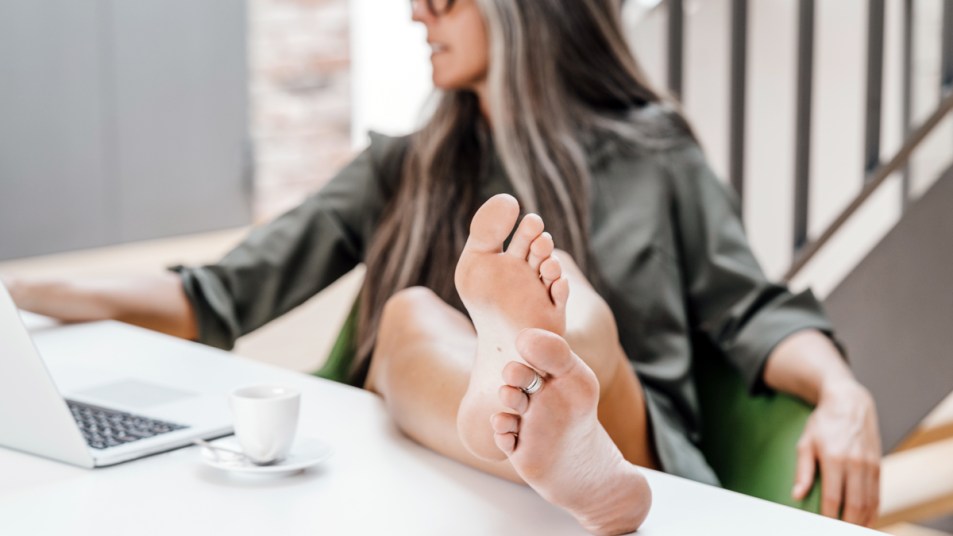How to Soothe Cracked Heels and Protect Them From Drying Out Again

Cracked heels are a pain — sometimes quite literally, especially if we let them go too long without treatment. But even if they aren’t causing any aches, no one likes to walk around with the bottom of their feet looking like the Grand Canyon.
With that in mind, we reached out to Emily Splichal, DPM, MS, a podiatrist based in New York City. She gave us the rundown on what causes cracked heels to begin with, the best methods and products for treating and restoring our feet to their former glory, and how to prevent the whole problem from happening again.
What causes cracked heels?
“Our feet get stressed every day with the average adult walking 5,000 to 8,000 steps a day,” Dr. Splichal explains. “All this pounding on the pavement not only stresses the foot muscles, but also the skin of the heels.”
Unfortunately, the natural way we walk — heel, toe, heel, toe — can add a lot of pressure to the back of our feet and make the area more vulnerable. Switching out our footwear in warmer weather can also add to the issue, which is especially frustrating since that’s exactly when we show off our feet.
“Dry heels are very common in all situations and seasons, but I find it a little more common in summer months as there is increased sandal use and open exposure to the skin,” Splichal says. “Without proper exfoliation and hydration, the rate of dry heel formation can accelerate.”
Even if we’re diligent about moisturizing our faces or hands, it’s easy to forget about our feet all the way at the bottom of our bodies until it’s time for our pedicure appointment. Along with those daily steps and airing them out in sandals, neglecting to give our feet a good slathering of cream or lotion on a regular basis is perhaps the biggest culprit behind cracked heels.
Luckily, there are a few ways to turn things back around again.
What is the best treatment for cracked heels?
According to Splichal, daily hydration is the key to smoothing cracked heels, plus exfoliating on a weekly basis. She suggests making it part of your nightly routine and recommends products like Arm & Hammer Moisturizer + Gentle Exfoliation ($9.99, Amazon), followed by lipping on a silicone heel pad, such as Source Force Gel Moisturizing Heel Protector ($8.92, Walmart), and a pair of socks before snoozing. Using cling wrap on your heels after moisturizing instead of a gel protector can work well, too. Either way, doing so before bed helps let all the hydration work its magic while you sleep rather than immediately adding the pressure of walking around during the day. Continue this process until your heels look soft again, then just maintain regular daily moisturizing.
If the skin on your heels has gotten especially thick, Splichal says pumice stones and foot files can help really get in there and exfoliate. However, she warns that if there is any fungus (like athlete’s foot), you should wait to use heavy duty exfoliators until it’s cleared up to avoid spreading the ickiness around.
Splichal adds that if your cracked heels have split to the point where there is a break in the skin, which are known as fissures, you could be at a higher risk for bacteria and infection. If your feet have gotten to that point — or aren’t any getting better with regular hydration and exfoliation — it’s probably time to make an appointment with a podiatrist. There’s a chance you need prescription-strength cream or another procedure they can provide.
The most important thing to remember for treating and protecting your heels: consistency. “This means that the hydration for severely dry and cracked heels needs to be every single night for several weeks,” she says. And maintaining that routine even once your heels have returned to their smooth and hydrated happy place so you don’t have to go through the whole ordeal all over again!

















